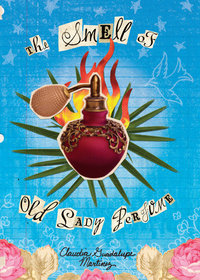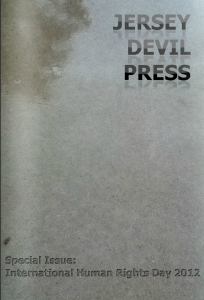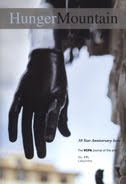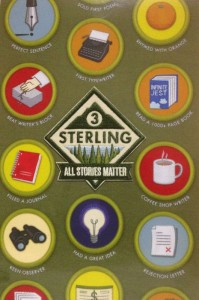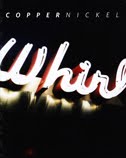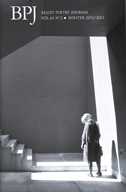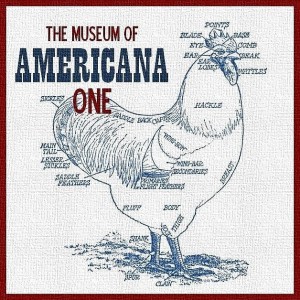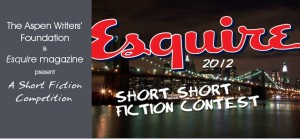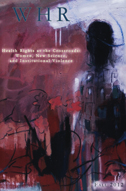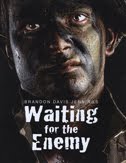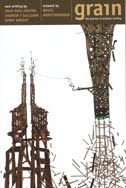Frequencies, a new biannual journal published by Two Dollar Radio, is dedicated to delivering artful essays for your reading pleasure. This first issue only contains four essays and an interview with Anne Carson, but the quality of each piece makes this journal heavy with literary weight. Continue reading “Frequencies – Fall 2012”
NewPages Blog
At the NewPages Blog readers and writers can catch up with their favorite literary and alternative magazines, independent and university presses, creative writing programs, and writing and literary events. Find new books, new issue announcements, contest winners, and so much more!
Frequencies – Fall 2012
Spread the word!
The Midwest Quarterly – Autumn 2012
The Midwest Quarterly, published at Pittsburg State University in Pittsburg, Kansas, is a no-frills, no-nonsense journal of scholarly essays and poetry. Continue reading “The Midwest Quarterly – Autumn 2012”
Spread the word!
River Teeth – Fall 2012
A journal dedicated to the nonfiction narrative, River Teeth celebrated its fourteenth year anniversary with its Fall 2012 edition. In many of the essays in this volume, the concepts of privacy and identity, which its editor Dan Lehman mentions in his notes, become a weighty trade-off for the benefit of nonfiction. The thirteen narratives that compose the volume are unique in subject matter and voice but share an artistic spirit, a deliberate frame of a world otherwise chaotic. Continue reading “River Teeth – Fall 2012”
Spread the word!
Solo Café – 2013
Solo Café 8 & 9 is a volume written by teachers and students. It considers the relationships between teachers and students as well as the dynamic of an educational setting. Having such a diverse age range of writers with so many different experiences relating to education was enlightening. The writing follows a more autobiographical track filled with emotion, rather than being dominated by writers trained to excel as creative writers. The raw story takes precedence over any craft in storytelling. It made for a very interesting read, and there were some great contributions of poetry to dive into. Continue reading “Solo Café – 2013”
Spread the word!
Stone Voices – Fall 2012
We read magazines for escape. At least, I do. Whether I’m sitting under the salon hair-dryer flipping through celebrity gossip or snuggling into a comfy chair with a novel that forces me to be the narrator (Look at me! I just killed a dragon!), I am an escape artist. I enjoy leaving reality far, far behind. So, for me, Stone Voices was a major wake-up call. Continue reading “Stone Voices – Fall 2012”
Spread the word!
Structo – Summer/Autumn 2012
Dear Structo: Continue reading “Structo – Summer/Autumn 2012”
Spread the word!
subTerrain – Summer/Fall 2012
The journal subTERRAIN is published thrice annually by the sub-TERRAIN Literary Collective Society in Vancouver, British Columbia. Although the journal originated in 1988, to a reader in the United States, it appears to be a somewhat Northern combination of the 1970s Mother Jones magazine with its funky typeface and riotous paper and Harper’s Magazine with its editorial composition. Despite its funding from various governmental entities, I don’t think its writers or its editorial collective really tend to bow or mew to anyone in particular. Continue reading “subTerrain – Summer/Fall 2012”
Spread the word!
Fellowship for Jewish Scholars & Writers
The Posen Foundation is proud to announce a unique international fellowship for junior scholars and emerging fiction writers. Each member of the Posen Society of Fellows receives a two-year, $40,000 award, as well as a special opportunity to collaborate with peers and learn from seasoned scholars and writers.
Eligible scholars should be completing a doctoral dissertation on a topic related to modern Jewish history or culture. Eligible fiction writers should be working on a Jewish-themed novel or short story collection, and should not yet have published their first book.
The inaugural class of Fellows will include six scholars and two fiction writers, who will convene each summer to share work, discuss progress, participate in workshops, and attend lectures by senior scholars and writers. The first gathering of Fellows will take place August 11–13, 2013, in Berkeley. Each Fellow will be expected to attend two annual gatherings, and, later on, to submit a report on their progress and adapt their work for a public audience.
To be considered for the Society, scholars must submit a dissertation prospectus, a writing sample of no more than 15 pages, a letter of recommendation from a major advisor, and a curriculum vitae. Scholars must have completed their comprehensive exams or have commenced writing their dissertations by April 1, 2013.
Writers should submit a writing sample (for novelists: 30-40 pages of prose; for short story writers: two or three completed stories), curriculum vitae, a description of the work in progress, and an explanation of how the writing sample fits into the larger work.
The Posen Society of Fellows is not restricted to any religion or nationality. Participants from outside North America should be in possession of valid visas.
Spread the word!
Best of the Best Essays
In an article for Publishers Weekly, Robert Atwan, the founder of The Best American Essays series, picks the 10 best essays of the postwar period. Six of the essays are available to read full-text online, and one via subscription (New Yorker).
Spread the word!
Tin House and Octopus Collaborate on New Poetry Series
Tin House Books and Octopus Books have announced a new collaborative poetry series. Acquiring titles in the new line will be Matthew Dickman, poetry editor of Tin House magazine, and Zachary Schomburg, editor at Octopus Books. First in the series will be Brandon Shimoda’s Portuguese. The two editors discuss the reasons for the new collaboration in their editors’ note:
“We represent two different types of small presses, with two different aesthetics, and two different audiences, but we’re both based in a city [Portland, Ore.] that has a palpable collaborative energy that is proving itself every day. And at a time when many larger presses are thinning their poetry rosters, we wonder if publishing collaboratively is a model that presses are missing out on, a model that smaller independent presses are capable of, because there is nothing to lose in teaming up to publish books for a multiplied and overlapped audience. This is a model that is necessary for a new kind of conversation to begin, not to see how we can meet in the middle, but how we can meet at the edges.”
Portuguese will be published by Tin House Books and Octopus Books on March 12, 2013 and distributed by Publishers Group West. Shimoda is the author of three previous books of poetry and is currently coediting, with poet Thom Donovan, a retrospective collection of writing by Lebanese American poet Etel Adnan (Nightboat Books, forthcoming).
In 2014, Tin House and Octopus will again collaborate to publish Bianca Stone’s new collection, Someone Else’s Wedding Vows.
Spread the word!
Interview :: Juliana Spahr
“I often wish [poetry] was more didactic. I like it to mean things, I confess.”
Juliana Spahr talks to Full Stop about historicized reading in the classroom, academic labor, and Meaning as part of the series Teaching in the Margins. With Teaching in the Margins, Full Stop looks to poets, novelists, educators and academics to survey the state of the humanities and explore the relationship between innovative writing and pedagogy.
You can find the interview here.
Spread the word!
Latinos in Children’s Literature
The New York Times blog City Room provides a reading list of children’s books with Latino characters in response to an article published in the NYT questioning: Where are all the Latinos? Aurora Anaya-Cerda, owner of La Casa Azul bookstore in East Harlem, provided the list, and readers are invited to continue contributing their selections via the comments.
Spread the word!
NANO Fiction Prize 2012
In the fall 2012 issue of NANO Fiction, the 2012 NANO Prize is announced and printed: “Hand Over Hand” by Patrick Swaney. The judge, Ryan Call, says, “While I read several entries that struck me for their unique presentation of the form, I loved how simply and unexpectedly the turns of the winning story occurred. . . . Swaney has quickly shared with us yet another brief, awkward interaction between strangers.”
Other contributors to this issue include Selena Anderson, Garrett Ashley, Lauren Becker, S.G. Childress, Jasmine Dreame Wagner, Nicolle Elizabeth, Bryce Emley, Kendra Fortmeyer, Gabrielle Lucille Fuentes, Scott Garson, Elisabeth Geier, L.P. Griffith, Elise Hunter, Simon Jacobs, Jason Joyce, Benjamin King, Kenneth Kronenberg, Emily Link, Maxim Loskutoff, Dan Lundin, Sam Martone, Rupprecht Mayer,John A. McDermott, Nicole Miller, John Poch, Alexis Pope, Michelle Reale, C. R. Resetarits, Scott Riley, Matt Sailor, Jared Yates Sexton, Patrick Swaney, Anthony Varallo, Mark Walters, Zack Wentz, A. Werner, and Gregory Zorko.
Spread the word!
New Lit on the Block :: The Golden Key
NewPages is happy to welcome yet another new, online magazine—The Golden Key. Publishing fiction and poetry twice a year, the magazines is available online and in PDF form for free. The magazine publishes speculative and literary writing, stories and poems that “grip,” “enchant,” and “enthrall” the editors.
The name of the magazine is inspired by the Grimm’s fairy tale by the same name. Co-Editor Susan Anspach says that the story “concludes with a boy lifting the lid of a little iron chest before revealing to readers what the chest contains. The Grimms,” she continues, “chose to end their collection of fairy tales with this story as a reminder that there exists an endless reserve of stories still yet untold. In the same spirit, our journal seeks to publish work that is open to strange and marvelous possibilities.”
During her MFA program at University of Maryland, Anspach met Co-Editors Carlea Holl-Jensen and LiAnn Yim. They were all reading a lot of speculative and strange work. “We were excited to share our fascination with the weird and the oft magical, and we knew we wanted more of it,” Anspach says. Thus, the magazine was born.
But compared to some other online magazines, this magazine will remain digital. The editors don’t have hopes of eventually turning it to a print publication because they wish to make “the best digital imprint [they] can.” Anspach says that this will help keep the costs low so that they can eventually pay their contributors.
The poems in the first issue include “Let’s Hurt” by Cat Richardson, “My Son to His Therapist:” and “Daughters of the Spindle” by Mary Elzabeth Lee, “Song of Solomon” by Maya K Lowy, “You tell me” by M.S. Rooney, and “dream, tiger” by Nancy Chen Long. The fiction includes “Bones” by Sylvia Linsteadt, “Fetching Whiskey Bill” by Lily Bruzas, “The Wooden Frame” by Alexander Gifford Howard, “Trail of Stones” by Adam Smith, and “Duplicator” by James D. Reed.
Every issue of the magazine is themed. The magazine accepts submissions via email starting Jan. 1 and running through March 31 for the next issue. You can follow The Golden Key on Facebook and Twitter (@GoldenKeyLit) for announcements on submissions, issue themes, and release dates.
Spread the word!
International Human Rights Day
In honor of International Human Rights Day (today), Jersey Devil Press is publishing a special one feature issue, featuring Robert Buswell’s “How I Upstaged Anne Frank.”
“No, Jersey Devil Press has not gone overtly political. (And hopefully never will)
So why are we publishing this story? Three reasons.
First, one of our missions at JDP is to publish stuff that deserves to be published that a lot of other people won’t touch. We like being the indie lit community’s Isle of Misfit Toys. Sometimes that means publishing a novella about poo-eating aliens. Sometimes it’s a story about peeing on a magical unicorn. And sometimes, it’s something a lot, lot darker.
Second, we think we have a thoughtful readership that can handle this story, that can see why we had to publish this incredibly dark piece of satire once it was submitted to us.
Third, and perhaps most importantly, we’re publishing this because it’s about something truly awful that actually happened to a real person. As we weighed the pros and cons of publishing this, that’s the thing that kept coming up: the chance to give a voice – even a satirical one – to a woman who died young and horribly.
And that’s why we decided to publish this story even though it violates many of our guidelines and particularly the one about rape. (We probably should say TRIGGER WARNING, by way of preface.)
It’s not an easy read, by any means, but we do think it’s a worthwhile one.”
Spread the word!
Hunger Mountain 10th Year Anniversary
Ten years ago, with the fall issue of 2002, Hunger Mountain lit mag was born. To honor their anniversary in the Fall 2012 issue, Hunger Mountain asked past contributors and editors to make lists of ten things, any kind of list they wanted. Here are some of the lists:
Robin Black: 10 spaces in my ideal home
Abby Frucht: 10 names for men’s hair dyes
Sascha Feinstein: 10 possible engravings for the tombstone I won’t have
Jewel Parker Rhodes: 10 books that I share with my kids
Bruce Smith: 10 songs with chicken in the title
Gish Jen’s daughter and friend, age 13: 10 things not to eat while reading
These lists and more can be read in the Fall 2012 issue along with new writing from Kirsten Clodfelter, Clarence Lai, Donald Quist, Gary Moore, Suzanne Parker, Jesse Damiani, Katherine Hollander, Muriel Nelson, Ellen LaFleche, Steven Harvey, Pam Houston, Sally Derby, and many more.
Spread the word!
K-12: Which Literature to Cut?
Washington Post article on the new common reading core in K-12:
Excerpts:
The Common Core State Standards in English, which have been adopted in 46 states and the District, call for public schools to ramp up nonfiction so that by 12th grade students will be reading mostly “informational text” instead of fictional literature.
…
English teacher J.D. Wilson agrees with much of what the standards aim to accomplish. But he is disturbed by the subtle shift the new standards are already causing in his classroom at Wareham High School in Wareham, Mass. “Reading for information makes you knowledgeable — you learn stuff,” Wilson said. “But reading literature makes you wise.” Wilson has wrestled with which poems to cut from his lesson plans and which nonfiction to teach instead. And then he hit upon an idea. This fall, he has taught “Literature Is Not Data: Against Digital Humanities,” “Shakespeare, a Poet Who Is Still Making Our History” and “Who Killed the Liberal Arts?” They are all essays that emphasize the value of literature.
Spread the word!
Paul Dry Book Sale
All Paul Dry Books 30% off until December 15 and shipping is free. Buy 3 or more books and they’ll throw in a free copy of either A Russian Schoolboy or Up in the Hills. (Tell them your pick in the “Notes” section of the order form.) Enter the coupon code HOLIDAY-2012 during checkout to receive this discount.
Spread the word!
Documentary :: Harana
 HARANA, a film project that Florante wrote and conceived about the search for harana practitioners, debuted at the BUSAN and HAWAII International Film Festivals in October 2012.
HARANA, a film project that Florante wrote and conceived about the search for harana practitioners, debuted at the BUSAN and HAWAII International Film Festivals in October 2012.
About Harana: Upon his father’s death, Florante, a classically trained guitarist returns to the Philippines after 12 years of absence. During his stay he rediscovers the music of harana – a long-forgotten tradition of Filipino serenading when men sang under the window at night to fearlessly declare their love for a woman.
Intent on unearthing these unheralded songs, Florante travels to the remote provinces where he discovers three of the last surviving practitioners – a farmer, a fisherman and a tricycle driver. Astounded by their golden voices, Florante asks them to travel with him to perform and record these unknown songs. During their travels, the haranistas meet Brian, a shy young man who for years has been secretly in love with a schoolmate. The haranistas, who have not serenaded in the last thirty years, offered their services to serenade Brian’s object of affection, resulting in one of the most tender moments of genuine harana captured on film.
[From the film website.]
Spread the word!
Writer Patches: Sterling journal
Sterling, a magazine we have just added to our complete guide to literary magazines, sends out its third issue with an attached patch. Meant to resemble the boy scout patches, the cover features patches for writers including “Rejection Letter,” “Keen Observer,” “Filled a Journal,” and my personal favorite, “Rhymed with Orange.” The editors says, “For the first printing, an actual iron-on embroidered patch was used for the wordmark. This 3″ square of awesomeness is well suited for denim, baseball caps, and framing.”
The issue features new poems, plays, and stories by Vincenzo Aliberti, David Bester, Michael Casteels, Channah Cohen, Armel Dagorn, Teresa Del Mastro, Simona Dragu, Tina Gagliardi, Channie Greenberg, John Grey, Stacey Lane, Joe Massingham, Steven Mayof, Daniel Perry, Jeannine Pitas, Kaye Spivey, and Hilary Trapp.
Spread the word!
Comprehensive New Collection of Louise Glück’s Works
A new collection of the poetry of Louise Glück was released last month from Ecco and Farrar, Straus, and Giroux. Poems 1962 – 2012, at 628 pages, is a clearly comprehensive look at the ouevre of the Pulitzer-Prize-winning poet.
Beginning with Glück’s Firstborn, published in 1968, Poems gathers 11 of her titles in total, ending with 2009’s A Village Life. Included are The Wild Iris (1992), which earned Glück the Pulitzer; Ararat (1990), for which she earned the Rebekah Johnson Bobbitt National Prize for Poetry from the Library of Congress; and 1985’s The Triumph of Achilles, which received the National Book Critics Circle Award, the Boston Globe Literary Press Award, and the Poetry Society of America’s Melville Kane Award. Her list of additional awards is extensive.
Glück’s poetry is devoid of frills, of cloying layers of too-heavy imagery. Instead, her language is sparse and plain, though no less descriptive in its detail:
I look out over the sterile snow.
Under the white birch tree, a wheelbarrow.
The fence behind it mended. On the picnic table,
mounded snow, like the inverted contents of a bowl
whose dome the wind shapes. The wind,
with its impulse to build.
—“World Breaking Apart,” from Descending Figure
The stripped-down language is deceptive in its simplicity. Glück can draw you in to her quiet world and then deliver a sudden blow:
Late December: my father and I
are going to New York, to the circus.
He holds me
on his shoulders in the bitter wind:
scraps of whitepaper
blow over the railroad ties.
My father liked
to stand like this, to hold me
so he couldn’t see me.
—“Snow” from Ararat
With poetry like this, there is little need for allegory or other traditional techniques. Which is not to say Glück does not use them: 2006’s Averno draws its name from a crater lake near Naples that was regarded by ancient Romans as the entrance to the underworld, and the 18 poems in the book retell the Persephone myth. But regardless of the devices used, Glück’s work remains simple, beautiful, almost hauntingly so; as she says, “I am prepared now to force / clarity upon you.”
Spread the word!
Andrei Codrescu on Reddit AMA Thursday, Dec. 5
Andrei Codrescu, author of the just-published Bibliodeath (Antibookclub), will be participating in a Reddit AMA session on Thursday, Dec. 5 at 10 a.m. Central time/11 a.m. Eastern.
To join in the discussion or ask a question, follow this link Thursday at the specified time: http://www.reddit.com/r/IAmA/
Bibliodeath is a book-length essay that addresses the end of the book in its print form. Codrescu mingles his thoughts about the migration of books to new formats with a memoir of his own writing history. Footnotes, pages long at times, serve as a parallel commentary to the book. Instead of falling into one camp or the other, Codrescu uses the concept of archives, both literal and metaphorical, to meditate on the transformation of the written word.
Codrescu is a poet, novelist, and contributor to NPR’s All Things Considered. He is the author of numerous books and was a distinguished professor at Lousiana State University before retiring to the woods a few years ago. A new collection of his poetry, So Recently Rent a World: New and Selected Poems, 1968-2012, is forthcoming next week from Coffee House Press. More information about the author and his wors can be found at his website.
Reddit’s AMA (Ask Me Anything) series lets readers submit questions to the participant, who will respond to them in real time. Questions can be on any topic. Participants have ranged from a driveway sealcoater, a toll booth worker, and a professional circus acrobat to Eric Idle, Larry King, and Barack Obama.
Spread the word!
Copper Nickel Contest Winners
The most recent issue of Copper Nickel features the winners of their 2012 contests. Fiction was selected by Kevin Wilson, and Paisley Rekdal judged poetry.
Fiction
First Place
Anne Valente: “Dear Amelia”
Special Mention
Sarah Gerkensmeyer: “My Husband’s House”
Adam Sturtevant: “The Pretenders”
Finalists
Shabnam Nadiya: “And We Rise How We Rise”
Leslie Rakowicz: “Celia”
Poetry
First Place
Tarfia Faizullah: “Reading C
Spread the word!
On Writing Every Day for Two Years
Poet Luisa Igloria on the second anniversary of her writing a poem every day for the past two years: “Perhaps ninety percent of whatI’ve written isn’t very good. Perhaps a few poems have promise. But what blows my mind is that I’m writing: writing every day. And that I have 730 poems thus far to return to and revise, if I so choose, is also a pretty astounding idea.”
Spread the word!
LitRagger: New App for the iPad
A brand new, free app called LitRagger is now available—released on Dec. 2. Exclusively for small press and university publishers, this app sells editions of journals featuring fiction, poetry, and essays. Readers can download the app for free and then purchase either single issues or subscriptions to the magazines.
Current participating magazines include Hobart, Prairie Schooner, Sycamore Review, Willow Springs, Bellevue Literary Review, Gulf Coast, Revolution House, FIELD, and Salamander. “The app features page turn animations, interactive tables of contents, and sharing on multiple devices—as well as regularly updated, free content.”
From the press release: “Developed by Adam Lefton and Landon Sandy, a computer science student at Purdue University, LitRagger simplifies the process of digital publication for journals with small staffs and even smaller budgets. As Managing Editor of Sycamore Review, Adam discovered that the methods currently available for entering the digital marketplace were too costly and inefficient for biannual and quarterly publications. With Landon’s coding expertise, they built LitRagger to make it easy and cost effective for literary journals to offer content on the iPad.”
To get the app on your iPad, you can search “LitRagger” in the app store, or go here for a link to download it.
Spread the word!
Maya Angelou Interview
The editor of Splash of Red magazine thanked the readers for being loyal by asking them if they had anyone they would like to see interviewed. One ambitious reader asked for an interview with Maya Angelou, and Splash of Red was able to deliver.
In the interview, Angelou discusses her writing process: “When I’m writing a book, I keep a hotel room in town – whatever town I’m living in – and I’m on the first floor. I rent it by the month. I talk with housekeeping management and I explain that I don’t want anybody in my room so they never have to change sheets or change towels. I don’t use any of that. I go in around 6:30 in the morning. And I keep in the room my Bible, a Roget’s Thesaurus, a Random House dictionary, stacks of yellow pads, and pens and crossword puzzles. . . .”
After further discussion on this answer, SoR asks “Even though you have performed with dance and been involved in theater, what is it that inspires you to write poetry as a creative medium?” Angelou admits that she doesn’t think she has ever been asked that question before: “I love the sound of the human voice. I’ve never been asked that before, I don’t think. I know I’ve never given that answer before but that’s really what it is. You see poetry is music written for the human voice and I love it. I spent six years of my life as a mute, a voluntary mute. I could speak but I wouldn’t. I would go into a room and think of my whole body as an ear. And I could go into a room and absorb all of the sound osmotically through my pores, my ears, and my hair. And I’ve never found any human voice I didn’t like. I’ve found words they’ve said…but the voice itself – I love the human voice. English to me is the most fantastic language.”
You can read the full interview on Splash of Red’s website.
Spread the word!
White Whale Ale
Another great gift idea for the holidays: “Powell’s Books has collaborated with Rogue Ales and Spirits to create a beverage for anyone who has a thirst for books and artisan craft beer — White Whale Ale, infused with the seafaring spirit of Moby-Dick. The concept behind the project was to go where beer has never gone before — by adding actual pages from a copy of Moby-Dick to the brew.”
Spread the word!
Chad Walsh Poetry Prize
Each year, Beloit Poetry Journal awards $4,000 for the Chad Walsh Poetry Prize, honoring Chad Walsh, the cofounder in 1950. The prize this year is the gift of Alison Walsh Sackett and Paul Sackett.
The award goes to Elizabeth T. Gray, Jr. for her poem “Albania” that was published in the Winter 2011/2012 issue.
Former winners include Margaret Aho, Karl Elder, Jessica Goodfellow, Mary Molinary, Lucia Perillo, Glori Simmons, Onna Solomon, and Charles Wyatt.
Spread the word!
Track Your OWN Submissions
Matt Bell, author and NMU professor, shared his submission tracker spreadsheet for all to use, copy, and share freely with others. It’s a “simple” Google doc, but includes the essentials that writers need to note as well as an active data formula for response time – a feature that seems of interest to many. To make your own copy, go to “File” and and select “Make a copy…” (Thanks for the directions, Matt!).
Spread the word!
New Lit on the Block :: the museum of americana
We are happy to welcome the museum of americana to our guide to literary magazines. Born from the desire to “revive and repurpose our cultural heritage” and pass it on to the next generation, the magazine publishes nonfiction, fiction, poetry, reviews, interviews, photography, and artwork. Editor Justin Hamm says that this quarterly online magazine’s name contains the word “museum” because it is what they’d like to accomplish. “One of the best parts of a museum experience is the juxtaposition,“ he says. “Dozens of periods exist under the same roof, which can create a pretty interesting mixture. We want our readers to have that kind of experience with each issue, to move from, say, Thomas Jefferson to Doo-Wop in one mouse click. At the same time, ‘museum’ is not meant to imply ‘retired’ artifacts under glass. We’re especially interested in work that makes Americana new, that experiments with or repurposes it in unexpected ways.”
Hamm says that beyond excellent reading and art, you can expect to experience “something akin to running into an old high school friend after twenty years, a simultaneous mixture of familiarity and foreignness.” Hamm says that the editors woud like to restore the cultural heritage’s vitality by “publishing work that uses the old as construction material for something new. Americans are down in a lot ways right now. We’re divided. Now seems like a good time to revisit our shared past.”
The first issue of the museum of americana includes poetry from Tony Barnstone, Scott Beal, Jenn Blair, Jeff Kass, Kathleen Kirk, Norbert Krapf, Christopher Martin, Kevin Millar, Dale Patterson, Pepper Trail, David Walsh, and Karen Weyant; fiction by Sean Conaway, Joyce Goldenstern, Paul Jaskunas, and Dan Mancilla; and nonfiction by Chelsey Clammer.
In the near future, the editors hope to add music and short films to the website as well as develop a team of regular reviewers to “spotlight Americana-themed books.” Eventually, they would like to become a print publication, perhaps even publishing some chapbooks and books.
Other editors include Poetry Editors Karrie Waarala and Tim Hunt, Prose Editors Lauren Alwan and Lindsey Griffin, and Photography/Art Editor Jennifer Joy Jameson.
The next reading period is the month of December. Submissions can be sent via email with full guidelines on their website. “We hope you’ll add submitting to us to your holiday to-do lists,” Hamm says.
Spread the word!
Rattle Poetry Prize 2012
The most recent issue of Rattle announces and publishes the winning piece of the 2012 Rattle Poetry Prize for $5,000: Heidi Shuler’s “Trials of a Teenage Transvestite’s Single Mother.” The editors writer, “A good poem doesn’t need to impress us with sophisticated language or fresh and unexpected metaphors. It doesn’t need to rhyme or not rhyme, or explore the until-now unexplored. But a good poem does have to take us somewhere and make us feeling something. With a momentum and a sense of emotional suspense that made us hold our breath, Heidi Shuler perfectly captures the intersection of a mother’s loving fear and a teenage son’s innocence about the world.” Here are the first two stanzas of her poem:
My son’s black ruffled skirt is shorter than the straight denim one
he usually wears. We’re late for school. Don’t dawdle, I say
as he swings one leg out of the truck and then the other, far unlike
how my grandmother taught me–knees clasped, pivot at the hips,
feet land together, and stand, ladylike. Those were Iowa manners;
this is Eugene, Oregon, etiquette, twenty years later. . . .
The poetry prize finalists include Lytton Bell, John Brehm, Norma Chapman, Kim Dower, Anna Evans, Catherine Freeling, David Hernandez, Krista Lukas, M, and Kenny Williams.
Spread the word!
[Bond, James]
I have not yet seen it, myself, but I hear in the latest James Bond film, Skyfall, Agent 007 may or may not cry. According to eonline.com, a tearful James Bond is a sin against the Ten Commandments of the James Bond franchise. When asked, Daniel Craig (the sixth official Bond, for those still counting) defended his character’s face-water: “He doesn’t cry, he’s sweating.” What’s funny is that in author Ian Fleming’s original dozen novels, the character Bond is found crying or sobbing about five times. His “heart lifts” a further six times; he’s rescued by a girl four times. I know this not because I’ve painstakingly read through all the books, but because Michelle Disler has—and has compiled her findings in the form of poems in [Bond, James]: alphabet, anatomy, [auto]biography. Continue reading “[Bond, James]”
Spread the word!
A Long Way from Home
Alice Walsh’s A Long Way from Home is a compassionately told novel that straddles the line between children’s and young adult fiction, and the story it tells will appeal to younger and older audiences alike. Continue reading “A Long Way from Home”
Spread the word!
As Long As Trees Last
Hoa Nguyen, similar to Louis Zukofsky—another poet whose work indelibly again and again proves the apt suitability of the term when intended as sincere compliment and appropriately applied—deserves the title of A Poet’s Poet. Nguyen’s poems approach pure poetry. That is to say, there’s no shtick, no commentary, no gloss, or outside concern beyond what the poem is busying itself being as a momentary occurrence of heightened language use. Any intrusion or obscuration is absent. While it’s obviously possible to situate Nguyen within a historical English language poetic lineage (which would run something like: Chaucer, Wyatt, Donne, Shakespeare, the Wordsworths, Keats, the Shelleys, Dickinson, Hopkins, Whitman, Hawthorne, Melville, Stein, Pound, Zukofsky, Olson, Duncan, Kerouac, Whalen, Notley, Mayer, Kyger) her work exists in a timeless flow of language and song; daily routines, observances, and distractions carrying the poems along: Continue reading “As Long As Trees Last”
Spread the word!
What Happened to Ivy
David Burke may seem like an awkward, average teenager, and in most ways he is. However, unlike most teens, David spends a good deal of time looking after his severely disabled younger sister, Ivy. She gets all the attention, whereas David believes he’s practically invisible to his parents. It’s not surprising that sometimes David feels resentful of Ivy, and it is in one of these moments of frustration that Kathy Stinson begins this compelling family drama, What Happened to Ivy. Given that Stinson has penned more than thirty titles across many genres, it’s not surprising that her prose effortlessly captures the range of emotions encompassed in this story. Continue reading “What Happened to Ivy”
Spread the word!
The Madness of Mamá Carlota
Her story reads like fiction. In 1864 Napoleon III and sentimental Mexican royalists re-established a Mexican monarchy, placing the Austrian Prince Maximilian and his Belgian wife Carlota as rulers. The move, in hindsight as grotesque as the gaudy art and fashion of Napoleon’s era, was extremely unpopular in the Americas. Following the Civil War, the American government supported an uprising spearheaded by lawyer/reformer Benito Juarez. The puppet monarchy was overthrown in 1867, and Maximilian was executed. Carlota escaped, never recovered from a subsequent nervous breakdown, and lived in a castle serving as an asylum until the age of 87. Continue reading “The Madness of Mamá Carlota”
Spread the word!
The Purple Runner
Solian Lede is a New Zealand runner who possesses a wealth of talent but who lacks sufficient discipline to excel at her sport. As Paul Christman’s The Purple Runner begins, Solian strives to become a winning professional runner, but she expresses ambivalence about the possibility of fame, the need to give up partying in order to focus on her running, and her frustrated attempts to find a partner who takes the sport as seriously as she does. Meanwhile, Chris Carlson is a television news editor working in New York City, whose true lifelong passion is for running, and Warren Fowles is a thirty-six-year-old San Francisco lawyer who seems to possess fortune in spades. Warren has good looks, a comfortable trust fund, and natural running ability, but what he lacks is the impetus to focus: whether on his running or on his creative dream of finishing a substantial poetry manuscript. As The Purple Runner develops, the narration moves between these three characters, and all three find themselves moving to London in order to fulfill their individual dreams. Continue reading “The Purple Runner”
Spread the word!
The Posthumous Affair
The “Little Man” and the “Fat Princess,” as children in the spring of 1880, trail a red balloon—a “swollen heart”—across Washington Square. And thus begins James Friel’s The Posthumous Affair, a beautifully written and unique, daring love story. Even the end is a risky stand on the part of the author. Continue reading “The Posthumous Affair”
Spread the word!
Butterfly Moon
The short stories by Anita Endrezze in Butterfly Moon are a hybrid of myths and folklore, mostly with a contemporary setting. Many traditions—Native American, Norse, Greek, Romanian, Transylvanian—are used with appearances by guardian angels, gypsies, witches, familiars, shadows, a vampire, the three fates—and a Jungian therapist. The breadth of her reach is not surprising as her father is a Yaqui Indian with roots in Sonora, Mexico and her mother’s roots are in Slovenia, Germany, Romania and Italy. For all the elements combined, the stories run smoothly as they take place in psychological space where we want answers about ourselves in the world. With the prominence of interior space, the drama is within the personal field of the characters . . . and in this personal field of hopes and desire for mercy, human beings haven’t changed much over the millennia. Continue reading “Butterfly Moon”
Spread the word!
Space / Gap / Interval / Distance
In Space / Gap / Interval / Distance, Judy Halebsky draws the many strands of her life’s arts together, braiding the leaps and bounds of expression into a fantastic set of ekphrastic poems. Continue reading “Space / Gap / Interval / Distance”
Spread the word!
Lady Business
From Sibling Rivalry Press, publishers of Assaracus: A Journal of Gay Poetry, comes a new contribution to the GLBT canon. This one is a collection of lesbian poetry from both established and new authors. Before the poems, a paragraph or so provides details about each author. While usually this information is found at the end of a collection, here it sets up the reader for what he/she is about to read. This book includes a nice assortment of poems, and it was refreshing to read such a wide variety of works from each author. In this collection, there is no “one and done.” Through their poetry, the reader is truly able to get to know each writer before it is time to move on to the next. Continue reading “Lady Business”
Spread the word!
My Only Wife
Jac Jemc has written a novel so wonderful that if it were a dish served at a social event, I would ask the hostess for the recipe. If I were to place the various ingredients which make up this book I might say a dash of Kafka, maybe a pinch of those new wave French writers like Robbe-Grillet, and a tablespoon of Andre Breton’s classic “A Mad Love.” Mix it all up and place between two covers. Become horizontal, relax, and serve. Continue reading “My Only Wife”
Spread the word!
Inukshuk
Gregory Spatz’s well-written novel Inukshuk involves two alternating and to some extent paralleling stories: a father-son story and an historical recreation of the last days of 19th century explorer Sir John Franklin and his crew members on the ice-bound ships Terror and Erebus, trying in vain to discover the Northwest Passage. The parallels come first from the same names: the father is named John Franklin and his son, who is convinced he is related to the explorer, is Thomas, a name he shares with a crewmember. The father has moved the two of them to Alberta, Canada to be closer to his wife, who is on her own Arctic observation exploration. And both the explorer’s wife and the father’s wife are named Jane. What really links the two stories, however, is the thirteen-year-old’s escape into the world of the explorer’s expedition in its last days. Meanwhile, the modern John Franklin escapes into his poetry and fascination with the selkie myth (a shape-shifting myth of seal to man and back again, like the father’s own alternating myth with real life). This is a story of the danger of obsessions, the father’s and son’s coming after mother/wife Jane’s abandonment of them for her own obsession. Father and son each suffer alone, especially Thomas, the outsider in his school. Continue reading “Inukshuk”
Spread the word!
2500 Random Things About Me Too
This is a book for the era of Facebook, memes and all. Matias Viegener heard about a spate of peeps posting Facebook lists of 25 Random Things about themselves and decided to assign himself the task of creating such a list for 100 days, posting each daily to Facebook. Thus he ended up with a total of 2500 ‘things’ which not surprisingly proves more than enough to fill a book. Continue reading “2500 Random Things About Me Too”
Spread the word!
Glimmer Train September Fiction Open Winners :: 2012
Glimmer Train has just chosen the winning stories for their September Fiction Open competition. This competition is held quarterly. Stories generally range from 2000-6000 words, though up to 20,000 is fine. The next Fiction Open will take place in December. Glimmer Train’s monthly submission calendar may be viewed here.
 First place: Doug Lawson [pictured], of Los Gatos, CA, wins $2500 for “The Mushroom Hunter.” His story will be published next November in the Winter 2014 issue of Glimmer Train Stories.
First place: Doug Lawson [pictured], of Los Gatos, CA, wins $2500 for “The Mushroom Hunter.” His story will be published next November in the Winter 2014 issue of Glimmer Train Stories.
Second place: Meghan Kenny, of Baltimore, MD, wins $1000 for “Heartbreak Hotel.”
Third place: Andrew MacDonald, of Toronto, Ontario, wins $600 for “Four Minutes.”
A PDF of the Top 25 winners can be found here.
Spread the word!
Short Short Fiction Contest Finalists
The Aspens’ Writers Foundation and Esquire magazine teamed up for a Short Short Fiction Contest that awarded 10 finalists who will gather in NYC for a writing workshop taught by Colum McCann. The finalists will read their piece in front of a live audience of judges. They are also invited to “Fiction Night at the Esquire,” a celebratory party where the winner will be announced. The winner will receive full scholarship to a fiction workshop at Aspen Summer Words, Writing Retreat and Literary Festival in Aspen, Colorado. The finalists are:
Kashana Cauley | New York, NY | Avenue B
Angela Cummings | Kirkland, WA | Humane
Alex DeBonis | Paris, TN | In the Market for Heartache
Kenneth Gagnon | Dover, NH | Impact
Ivy Hansen | Carbondale, CO | To Do
Daniel McGillivray | Brooklyn, NY | Neither
Courtney Sender | Baltimore, MD | Accounting
Richard Rauch | Lacombe, LA | Devilment at the Comfort Inn
Bob Thurber | North Attleboro, MA | My Father’s Study
Casey Walker | Iowa City, IA | Picnic, Lightning
Spread the word!
Health Rights at the Crossroads
This special issue of Western Humanities Review is themed “Health Rights at the Crossroads: Women, New Science, and Institutional Violence.” The editors say, “Together these articles [in the magazine] exemplify the vital conversation in the medical humanities and social sciences that is emerging at the intersection of women’s rights, emerging technologies of science and health, and institutional violence. This conversation and the articles in this issue raise critical questions about the meanings of power and empowerment for women engaged in practices such as wage labor via assisted reproductive technologies and sex, and the political and economic struggles over the circumstances within which they will engage in these labors and have access to health services such as abortion.”
The issue features writers Leslie Butt, Kelly Ray Knight, Rachel Niehuus, Sharmila Rudrappa, Carolyn Sufrin, and Tracy Weitz and was guest edited by Galen Joseph and Dorothy Porter.
Spread the word!
Waiting for the Enemy
Each year, Iron Horse Literary Review publishes a single-author contest and issue. This year they have chosen to feature Brandon Davis Jennings. The editors say, “This chapbook of stories stormed through the Iron Horse office and left us in a shambles! We’re now big fans of this writer, and if we can just get a copy to your doorstep, we know you’ll feel the same way.”
Spread the word!
New Academic Journal :: Word Hoard
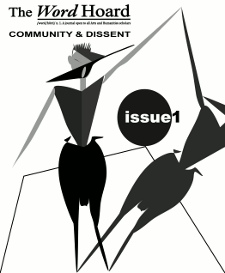 Peer edited and drawing on an editorial presence that includes students from the Centre for American Studies, the Centre for the Study of Theory and Criticism, Modern Languages and Literatures, Comparative Literature, Women’s Studies & Feminist Research, and the Department of English, Word Hoard is a new community journal supported by Western University’s Graduate English Society.
Peer edited and drawing on an editorial presence that includes students from the Centre for American Studies, the Centre for the Study of Theory and Criticism, Modern Languages and Literatures, Comparative Literature, Women’s Studies & Feminist Research, and the Department of English, Word Hoard is a new community journal supported by Western University’s Graduate English Society.
Word Hoard is currently soliciting articles, essays, and interviews for their second issue. They invite submissions between 3000-5000 words related to the provocation and concept of “The Unrecyclable.” Article and interview submissions are due 15 January, 2013. Accepted submissions can expect online and print publication in the summer of 2013.
Current Issue: Volume 1, Issue 1 (2012)
Community and Dissent
Articles available full-text (PDF) online:
Editors’ Introduction: Leif Schenstead-Harris, Nina Budabin McQuown, and Kevin Godbout
“Prometheus Queer: An Interview With Daniel Allen Cox” by Matthew Halse and Dock Currie
“The Progeny of Prometheus: Solidarity as Gift” by Mary Eileen Wennekers
“Identity, Memory and Place” by Kelly Baker
“Queer Spaces and Strategic Social Constructions in Rao’s The Boyfriend” by Frederick D. King
“Embracing Identity Politics as a Way of Dealing with a Self in Crisis in Edmund White’s The Married Man” by Zied Khemakhem
“Nationalism, Community, Literature” by Christopher Langlois
“Leadership, Authenticity, and the Arendtian World” by Rita A. Gardiner
“Leadership and Pedagogy in the Arts and Humanities: An Interview with Alison Conway and Joel Faflak” by Diana Samu-Visser and Nina Budabin McQuown
“Patricia Grace’s Potiki: A Case Study for the Adaptability of Postcolonial Theory to Indigenous Literature” by Karim Abuawad
“Publishing and Reading as Dissent: Resistance, Literary Tourism and Arsenal Pulp Press” by Casey Stepaniuk
“1984, Genesis Upside Down” by Jamie Rooney
“A Walking Tour of Light” by Leif Schenstead-Harris
“’& Then’: Word Hoard’s Closing Remarks” by Leif Schenstead-Harris, Nina Budabin McQuown, and Kevin Godbout
Spread the word!
Haiku Horoscopes
At the back of each issue of Grain, Jonathan Ball contributes Haiku Horoscopes. Several of the editors at NewPages editors fall under the sign of Taurus. For the Fall 2012 issue, this is our horoscope:
It’s time that you did
Something about that wombat
Who owes you money
The rest of the issue contains new writing by Joan Shillington, Andrew F. Sullivan, Kirby Wright, Ian Bullock, John Cameron, Laura Clarke, Jeanie Keogh, Allison LaSorda, Mark Jordan Manner, Ted Mc Carthy, Claire Millikin, Matt Nagin, Ruth Roach Pierson, David Romanda, and Jenna Spearing.

